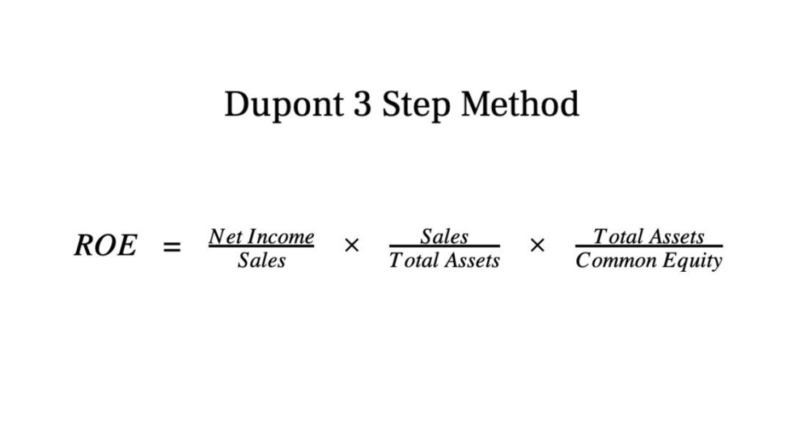
Suppose for example the account was a sales account recording cash and credit sales to customers. It would be normal for such an account to have a net credit balance and the balancing off accounts process would result in the following. The process for balancing off T accounts where the total credits exceed the total debits is identical to that above except that the carried down and brought down entries would be reversed. It is important to understand that balance sheets only provide a snapshot of the financial position of a company at a specific balancing in accounting point in time. It is helpful for business owners to prepare and review balance sheets in order to assess the financial health of their companies. Businesses should be wary of companies that have large discrepancies between their balance sheets and other financial statements.

What Is a Balance Sheet?
- The allowance for obsolescence and the inventory valuation at lower of cost or market are reconciling items to consider in the inventory recording and reconciliation processes.
- For instance, imagine an investor who purchases $20,000 of a company’s stock, then sells the stock for $25,000.
- Although the term account balance applies to both, it is more prevalent in the latter field.
- To do this, you’ll need to add liabilities and shareholders’ equity together.
- My Accounting Course is a world-class educational resource developed by experts to simplify accounting, finance, & investment analysis topics, so students and professionals can learn and propel their careers.
Auditing and forensic accounting represent other important accounting specializations. When retained earnings (RE) are positive, they increase the organization’s equity. That equity may then be reinvested back into the business to fuel its future growth. If totals are not equal, it means that an error was made in the recording and/or https://www.bookstime.com/ posting process and should be investigated. This account provides an individual identity to an entity, allowing them to separate their funds from others. For the bank, this account makes the customer unique and makes transacting with them straightforward.
- A company usually must provide a balance sheet to a lender in order to secure a business loan.
- Then we produce the trial balance by listing each closing balance from the ledger accounts as either a debit or a credit balance.
- Without context, a comparative point, knowledge of its previous cash balance, and an understanding of industry operating demands, knowing how much cash on hand a company has yields limited value.
- Accountants track and record these elements in documents like balance sheets, income statements, and cash flow statements.
- Balancing a checking account is a financial task that should be performed regularly to track your spending, monitor your account, and ensure that your money is actually there when you need it.
- If they do not, then your account is unbalanced and you have money that is unaccounted for.
What are the Steps in Account Reconciliation?

It is crucial to remember that some ratios will require information from more than one financial statement, such as from the income statement and the balance sheet. Common account reconciliation differences are timing differences in recording to the general ledger, outstanding and missing transactions, and transaction errors. The steps in balance sheet account reconciliation vary by type of account but may be generalized to include the following numbered steps. The cash account is reconciled to bank statements rather than a subsidiary journal (sub-ledger) for that account. Accounting software and ERP systems have built-in features and electronic forms to reconcile cash accounts with bank statements. Capital accounts activity includes par value of the common stock, paid-in capital, and treasury share transactions.
Assess Your Balance
The balance sheet categories those account balances under the assets, liabilities and equity headings. When paired with cash flow statements and income statements, balance sheets can help provide a complete picture of your organization’s finances for a specific period. By determining the financial status of your organization, essential partners have an informative blueprint of your company’s potential and profitability. In accounting, a general ledger is a complete record of how a company spends and uses its resources in order to conduct business. The debit column, on the left, records money coming in, and the credit column on the right records money going out.

Compare Your Check Register to Your Statement
Balancing of books holds major significance for all companies or small business owners. You can easily ascertain the financial status of your company or business when you keep an accurate bookkeeping system. The book balance consist of all transactions that a company does within an accounting cycle, such as a fiscal or quarter year. When one asset replaces another asset, one asset increases while the other asset decreases in the accounting books. For example, if a debtor pays back the amount owing to a business, the accounting effect is to increase the cash account and decrease the receivable account. The accounting equation will not balance if a double entry is completely omitted from the accounting books.

This trial balance is called an unadjusted trial balance (since adjustments are not yet included). When you log into an online banking account, the first thing you will see is your account balance. Account Balance is the amount of funds you have available in https://www.facebook.com/BooksTimeInc/ a given financial account; such as a checking or savings account.
- Physical inventories are conducted annually and through more frequent cycle counts of fewer items.
- In other words, a trial balance shows a summary of how much Cash, Accounts Receivable, Supplies, and all other accounts the company has after the posting process.
- Balance sheets are typically prepared at the end of set periods (e.g., annually, every quarter).
- The main difference is where the money comes from; a debit card is connected to your bank or credit union account, and the payments are subtracted from your account balance.
- The balance sheet only reports the financial position of a company at a specific point in time.
- Assets are what the company owns, while liabilities are what the company owes.
- A balance sheet is a financial statement that communicates the “book value” of an organization, as calculated by subtracting all of the company’s liabilities and shareholder equity from its total assets.
When reconciling balance sheet accounts, consider monthly adjusting entries relating to consolidation. A trial balance is a worksheet with two columns, one for debits and one for credits, that ensures a company’s bookkeeping is mathematically correct. The debits and credits include all business transactions for a company over a certain period, including the sum of such accounts as assets, expenses, liabilities, and revenues. Basic accounting concepts used in the business world encompass revenues, expenses, assets, and liabilities.

Αφήστε μια απάντηση